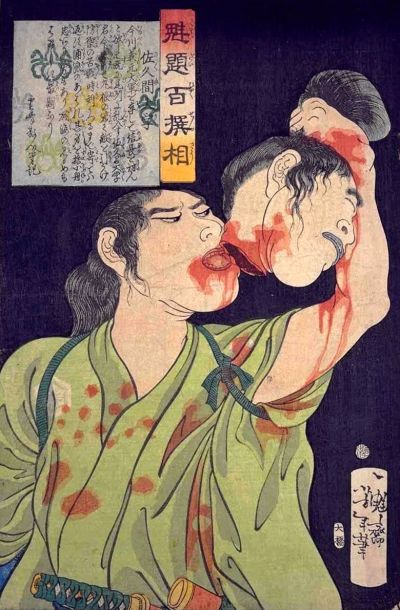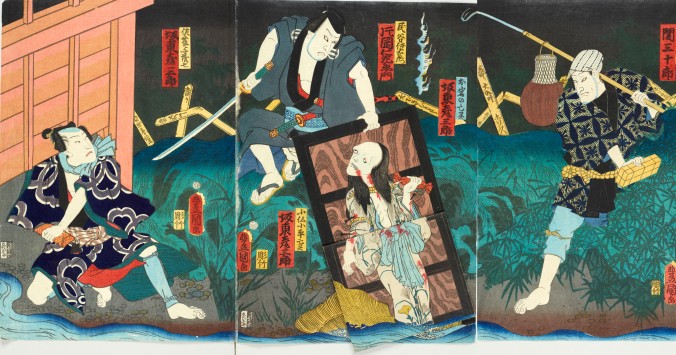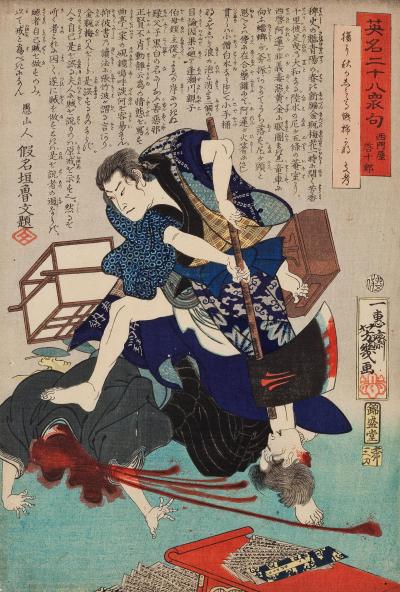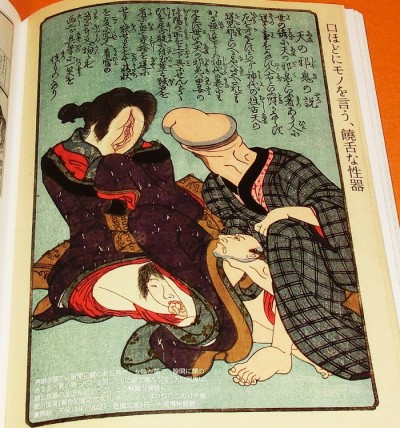
In the early hours of August 5, 1962, movie star Marilyn Monroe was reported dead in her home in Los Angeles, California. She had been found lying face down in her bed, naked and with her hands by her side.
Around midnight, her housekeeper Eunice Murray had noticed that Marilyn’s bedroom light was on. She knocked on the door a few times, but Marilyn didn’t answer. At 3:00 AM, Murray started to worry and called Dr. Ralph Greenson, Marilyn’s psychiatrist. After he failed to knock down her door, he looked through her window and saw her lying on her bed. He then broke the window, checked her for a pulse, and realized she was dead. The police were called at 4:30 AM.

Marilyn Monroe’s bedroom.
When they arrived, they questioned Murray, Greenson, and another doctor on the scene. They inspected the room and noticed that despite that there were empty pill bottles on her nightstand, there was no glass or cup of water anywhere to be found. Greenson estimated that Monroe died around 12:30 AM, while undertaker Guy Hockett thought her time of death sometime between 9:30 and 11:30 PM. The autopsy, conducted by Dr. Thomas Noguchi, concluded that Monroe had overdosed on sedative drugs, possibly to commit suicide.

Marilyn’s body being taken out of her home.
Her death has since been surrounded in controversy, and many of her fans and admirers believe that she was given the pills against her will. The investigation was quick and suspicious, and the official account of her death begs numerous unanswered questions. Why, for example, did it take Murray so long to call for help? What about the reports that Greenson summoned an ambulance and then turned it away after finding Marilyn dead? And how did a drinking glass, after the police search, turn up in Marilyn’s room? Murray would later change her story several times over her life, and the first policeman on the scene, Jack Clemmons, said that “Her hands were by her side and her legs were stretched out perfectly straight. It was the most obviously staged death scene I had ever seen. The pill bottles on her bedside table had been arranged in neat order and the body deliberately positioned, it all looked too tidy.”
There have been numerous theories about what really happened to Marilyn Monroe, many of them placing the blame on the Kennedy brothers or Dr. Ralph Greenson. Below are five of the most common ones, provided by crackpots and experts alike.
5. She was Murdered by Communists

Author and conspiracy theorist Frank A. Cappell.
In June 1964, far right-wing author Frank A. Cappell published arguably the first book that expressed skepticism about the official account of Marilyn’s demise, The Strange Death of Marilyn Monroe. Cappell’s 70 page booklet featured some of the earliest tropes now common in conspiracy circles, including that the Kennedys had a hand in her death. Cappell argued that both Marilyn and Robert F. Kennedy were communists, and that Marilyn was ultimately the victim of a vast communist conspiracy. According to Cappell, “Many ‘suicides’ and ‘heart attacks’ and ‘accidental deaths’ are in reality murders ordered by the Communist Party.”
4. She was Killed by the FBI or CIA

Cover of Norman Mailer’s best-selling biography.
A lot of the ideas in Cappell’s booklet were introduced to the mainstream in Norman Mailer’s best-selling Marilyn: A Biography, which was published in 1973 to great public attention. Mailer, a Pulitzer Prize-winning novelist never shy of provoking controversy, repeated the link between Marilyn’s death and the Kennedys.
He believed, to get back at the Kennedys for the disastrous Bay of Pigs fiasco, right-wing agents of the FBI or CIA killed Marilyn to upset the Kennedy brothers. He also claimed that Marilyn called the White House on the night of her death, and that the FBI confiscated her phone records. Mailer, however, didn’t have a single shed of evidence to back up his claims, and later admitted he only wrote the book for money.
3. It was a Fake Suicide Attempt Gone Awry

Peter Lawford and Marilyn Monroe at John F. Kennedy’s birthday celebration in 1962.
According to this theory, based on a non-authenticated report supposedly circulated among the FBI in 1964, Marilyn thought she could revive her career by making a suicide attempt. Peter Lawford, a friend of Marilyn and the brother-in-law of Robert F. Kennedy, heard about this plan from some of Marilyn’s other friends. After telling Kennedy, whom allegedly was having an affair with Marilyn and wanted to get rid of her, Lawford persuaded Dr. Ralph Greenson and Eunice Murray to help orchestrate the suicide “attempt”.
So Greenson prescribed a few bottles of Seconal tablets to Marilyn, and then Murray is said to have put them in Marilyn’s bedroom on the night of her death. Believing that the pills could easily be pumped out of her stomach, Marilyn swallowed dozens of the them to overdose. After she became unconscious, Murray called Greenson, and they waited to contact the police until Marilyn died.
2. She was the Victim of a Mafia Hit

Mob boss Sam Giancana.
Darwin Porter, a biographer and travel writer who has written dozens of books, claims in Marilyn At Rainbow’s End that Marilyn was killed by the Mafia. Porter speculates that mob boss Sam Giancana, possibly paid off by one of the Kennedy brothers, ordered a hit on her. He said that Robert F. Kennedy had gone to Marilyn’s house that day and gotten into an argument. After he left, a partner of Gianacana named Johnny Roselli visited her at 10 PM.
When he left, he unlocked the front door, and then let five Mafia hitmen in. One of the hitmen sneeked up behind Marilyn while she was in the front room, and then slipped a chloroform-soaked washcloth over her face. They then undressed her, administered an enema of barbiturates, and moved her into her bedroom. They left after hearing Eunice Murray walk into the house. After the police were called, Peter Lawford arrived at the scene and stole a little red diary, which was said to have been filled with details about Marilyn’s affairs and sex encounters.
1. She was Killed by RFK and Ralph Greenson

Marilyn Monroe with the Kennedy brothers.
Journalists Jay Margolis and Richard Buskin in their book The Murder of Marilyn Monroe: Case Closed, repeated the story about Marilyn and Robert F. Kennedy having an affair and then getting into an argument the day before her body was found.
According to this theory Kennedy told Marilyn that he wouldn’t marry her, and Marilyn threatened to stage a public conference and reveal her affairs with him and his brother John. Kennedy demanded that Marilyn leave him alone, and to hand over the diary in which she kept track of her affairs. Marilyn refused, and Kennedy left in a fit of rage.

Dr. Ralph Greenson, Marilyn’s psychiatrist.
He called up her psychiatrist, Dr. Ralph Greenson, another man Marilyn had been sleeping with. Kennedy falsely told Greenson that she was planning to go public with the affair she was having with him. Greenson, worried that his reputation would be ruined, agreed to go with Kennedy to convince Marilyn to hand over the diary. That evening, Kennedy came back to Marilyn’s house, bringing along two bodyguards, Greenson, and his brother-in-law Peter Lawford.
One of the bodyguards shot Marilyn with an injection of Nembutal to calm her down, and then Kennedy threw her to the floor. While Kennedy and Lawford were looking for the diary, his bodyguards tore Marilyn’s clothes off and administered a powerful enema that would further sedate her. The group of men left around 10:30 PM, and Marilyn’s housekeeper Eunice Murray and son Norman Jefferies found her naked and unconscious on her bed a short while after. They called for an ambulance, and one of the attendants, James Edwin Hall, attempted to revive her with a resuscitator.
Suddenly, Ralph Greenson appeared on the scene, explained who he was, and then ordered Hall to remove the resuscitator. Greenson thrust a foot-long syringe into Marilyn’s chest, and then allowed her to be moved into the ambulance. At about 4:30 AM, Greenson called LAPD sergeant Jack Clemmons and told him that Marilyn had committed suicide. Marilyn was taken back to her home, and her death was subsequently ruled a suspected suicide.

Be sure to check back on Bizarre and Grotesque every Sunday and Wednesday for new articles, and don’t forget to hit those SHARE buttons down below!
Sources:
http://www.marilynmonroe.ca/camera/books/89.html
https://books.google.com/books?id=eb2oQbu8xcsC&pg=PT32&lpg=PT32&dq=marilyn+monroe+norman+mailer+cia&source=bl&ots=4dlzbnrxMZ&sig=_pVvqZVqm6z534ZfYhYrjePcjLI&hl=en&sa=X&ved=0CEoQ6AEwCmoVChMIwOePo9P_xgIVCJANCh0lHQDr#v=onepage&q=marilyn%20monroe%20norman%20mailer%20cia&f=false
http://www.dailymail.co.uk/news/article-2630449/EXCLUSIVE-Bobby-Kennedy-ordered-Marilyn-Monroes-murder-lethal-injection-prevent-revealing-torrid-affairs-RFK-JFK-dirty-Kennedy-family-secrets-new-book-claims.html
http://www.mirror.co.uk/news/world-news/marilyn-monroe-death-new-book-1174703
http://www.dailymail.co.uk/news/article-443111/Did-Kennedy-clan-fool-Marilyn-killing-herself.html





































